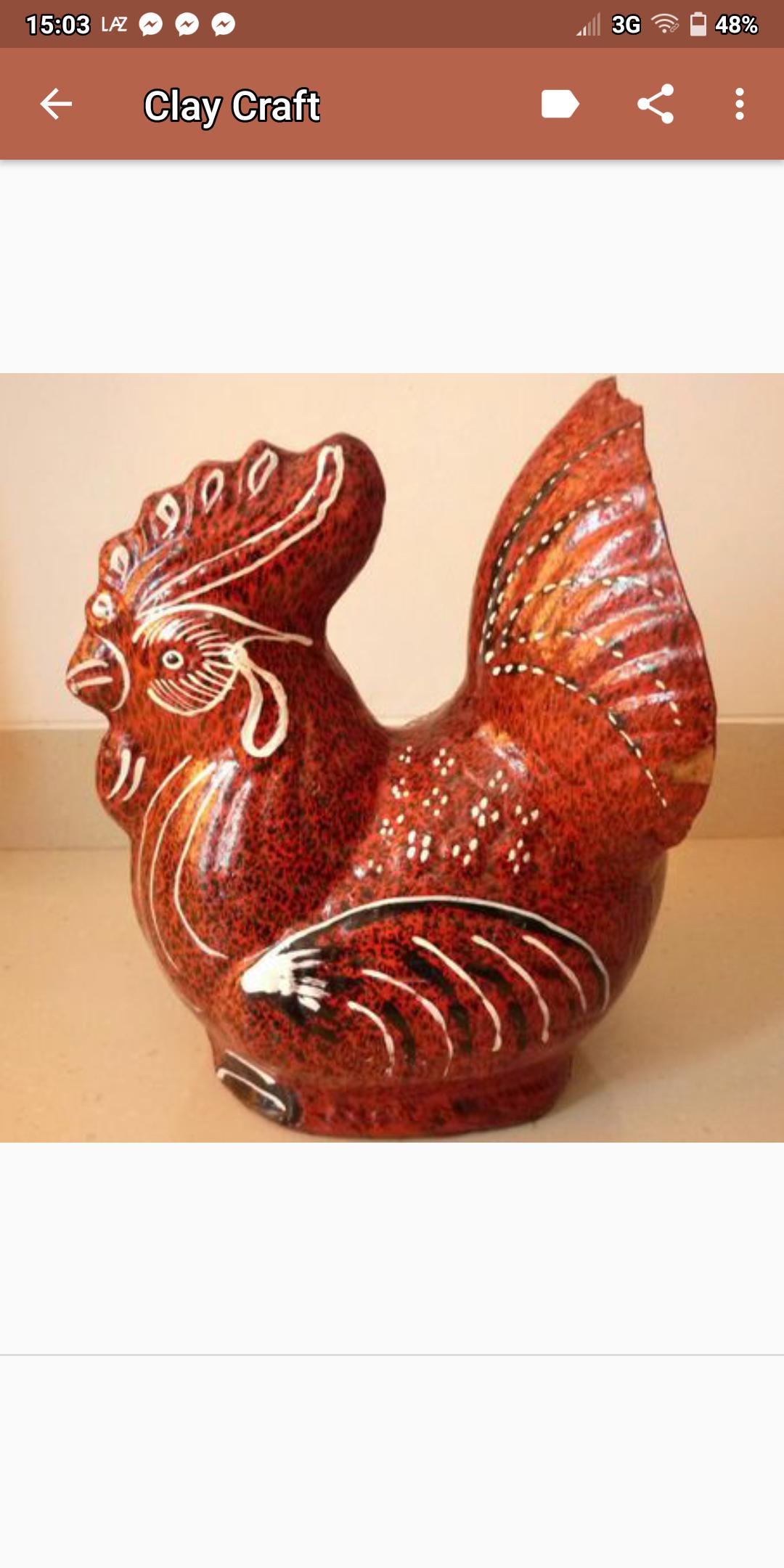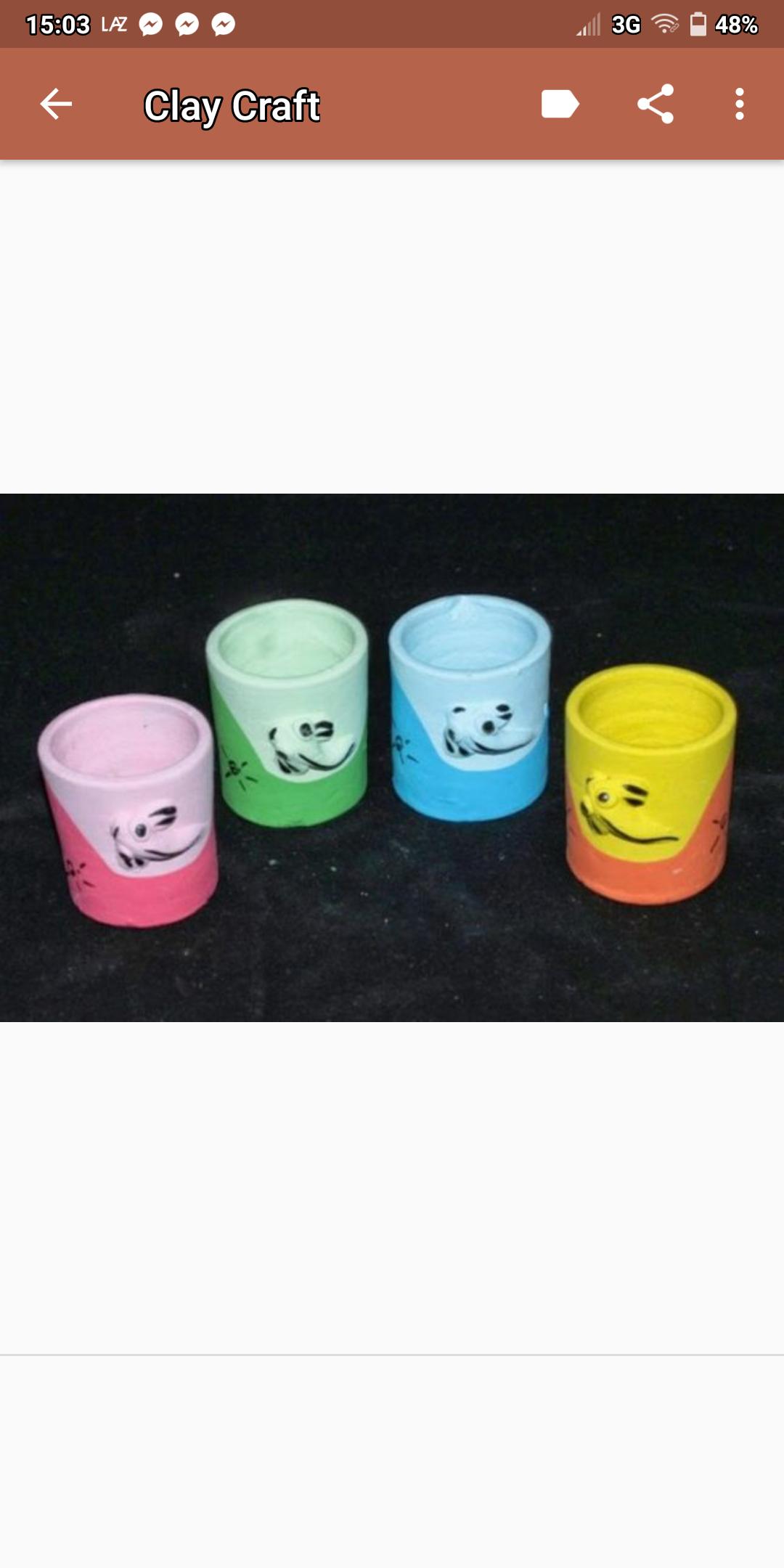Description of Clay Craft
The purpose of craft is goods produced through one's hand skills. Whereas what is meant by land is a certain type of soil whose main characteristics are sticky, sticky or clay. Clay is chosen as a raw material for crafts because it is sticky and easy to form.
Another name for clay crafts is pottery crafts.
There are many ingredients around us that can be used to make high-value artwork. Like clay crafts that have more value than other craft materials. Clay is a material that can be made from various handicrafts.
Crafts made from soil are generally known by people with ceramic crafts. The origin of the word ceramics is shampoo (Greek) which means glassware made of clay and has undergone a process of combustion. In making ceramics, clay has an easy to form plastic property. After that, it can be burned in a combustion rate of 600 to 1,300 degrees Celsius according to the type of clay so that the clay becomes hard, dense, and water resistant.
Indonesia has ceramic handicrafts from various different regions. Each region is unique in form, technique and decoration. Biological wealth in Indonesia has inspired the beauty and uniqueness of the form of ceramic crafts into Indonesian ceramics that are thick with cultural features that distinguish them from Chinese, Japanese, or European ceramics.
This material is widely used because it has a soft and easily shaped texture, so that the work produced not only has aesthetic value but also has use value for use in everyday life. But there are also works that are made only for display, so that the making is also emphasized in aesthetic values rather than values.
The technique of making clay crafts:
a. Press Massage Technique
Pinch massage technique is a manual ceramic formation technique. The way the clay is pressed, from the shape of the ball to the desired shape using a finger.
b. Hammer technique
Coil technique is a manual technique for forming ceramic bodies where clay is rolled to form a ground twist.
c. Slab Technique
The slab technique is a technique for manually forming ceramic bodies by forming slabs using rollers. Slabs are used to make ceramic works that are square or cylindrical.
d. Print Technique
The formation technique with reference to printing equipment can be used to produce large quantities of ceramic products, and relatively short time with the same shape and size. Print techniques include: solid printing with press (press) and wet or liquid printing with printing techniques.
e. Playing technique
The technique of forming a ceramic body using a kickwheel can produce many symmetrical shapes.
In this application you will be treated to various types of clay crafts ...
Another name for clay crafts is pottery crafts.
There are many ingredients around us that can be used to make high-value artwork. Like clay crafts that have more value than other craft materials. Clay is a material that can be made from various handicrafts.
Crafts made from soil are generally known by people with ceramic crafts. The origin of the word ceramics is shampoo (Greek) which means glassware made of clay and has undergone a process of combustion. In making ceramics, clay has an easy to form plastic property. After that, it can be burned in a combustion rate of 600 to 1,300 degrees Celsius according to the type of clay so that the clay becomes hard, dense, and water resistant.
Indonesia has ceramic handicrafts from various different regions. Each region is unique in form, technique and decoration. Biological wealth in Indonesia has inspired the beauty and uniqueness of the form of ceramic crafts into Indonesian ceramics that are thick with cultural features that distinguish them from Chinese, Japanese, or European ceramics.
This material is widely used because it has a soft and easily shaped texture, so that the work produced not only has aesthetic value but also has use value for use in everyday life. But there are also works that are made only for display, so that the making is also emphasized in aesthetic values rather than values.
The technique of making clay crafts:
a. Press Massage Technique
Pinch massage technique is a manual ceramic formation technique. The way the clay is pressed, from the shape of the ball to the desired shape using a finger.
b. Hammer technique
Coil technique is a manual technique for forming ceramic bodies where clay is rolled to form a ground twist.
c. Slab Technique
The slab technique is a technique for manually forming ceramic bodies by forming slabs using rollers. Slabs are used to make ceramic works that are square or cylindrical.
d. Print Technique
The formation technique with reference to printing equipment can be used to produce large quantities of ceramic products, and relatively short time with the same shape and size. Print techniques include: solid printing with press (press) and wet or liquid printing with printing techniques.
e. Playing technique
The technique of forming a ceramic body using a kickwheel can produce many symmetrical shapes.
In this application you will be treated to various types of clay crafts ...
Additional Information









